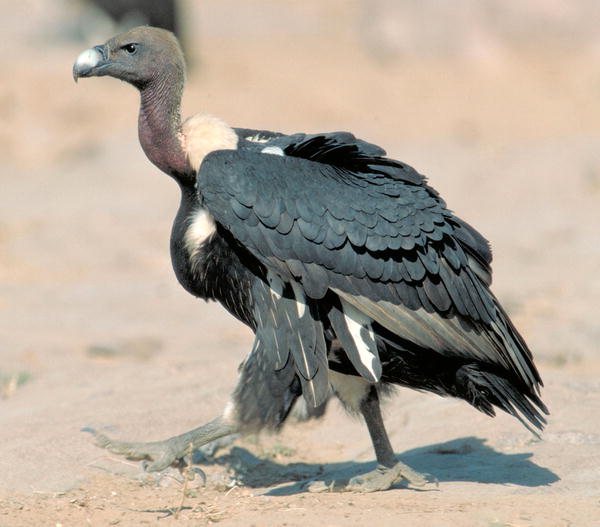Asian Vultures Face Extinction: Anti-Inflammatory Diclofenac Culprit
Vultures in India, Pakistan, Nepal and other South Asian countries have been decimated from being the 'most common large bird of prey' just two decades ago, to hovering at the brink of extinction. More than 95 % of the vulture population has disappeared, before we took notice. The reason is an anti-inflammatory drug, commonly used in livestock, such as cows. The drug's residues destroy the liver of the birds that feed on the carcasses of treated animals.
The cause of the great dying was found just over a year ago, according to a BBC report, which fingered diclofenac, a non-steroidal anti-inflammatory drug whose veterinary use on livestock in South Asia has grown rapidly in recent years. The Indian government is in the process of prohibiting the use of diclofenac on livestock. A paper recently published by the Public Library of Science (PLoS Biology) proposes to switch to another, less damaging anti-inflammatory: meloxicam. When fed to vultures, the drug did not have visible negative effects.

Image credit: Goran Ekstrom/PLoS Biology
Another possible way of protecting wildlife - not only the vultures we see vanishing in the space of a mere decade or two - would be to switch not drugs but agriculture, to change from the chemical paradigm prevalent today to biological agriculture, where life is not exposed to potentially deadly toxins. But that does not seem to be part of the Indian authorities' plans, at least for now.
A synopsis of the study describing what happened and why is available from PLoS:
- - -
Switching Drugs for Livestock May Help Save Critically Endangered Asian Vultures
In just ten years, tens of millions of vultures have vanished from the Indian subcontinent. Since the early 1990s, white-backed (Gyps bengalensis), long-billed (G. indicus), and slender-billed (G. tenuirostris) vulture populations have dropped by over 95%. In Europe, it was clear that human persecution eradicated bearded and griffon vultures from some countries (reintroduction and protection efforts are now restoring populations). But in India, where it is illegal to kill wildlife and the bird is valued for its ecological role, their unprecedented decline was puzzling. Dead birds found in India, Pakistan, and Nepal had extensive visceral gout (a buildup of uric acid crystals in the internal organs associated with renal failure). The birds often appeared sick and lethargic, some showed prolonged severe neck drooping, before collapsing—sometimes from their perches...
See also:
Removing the Threat of Diclofenac to Critically Endangered Asian Vultures
(the full text of the study as published on PLoS biology)
Vultures under threat worldwide
Scientists formulate Indian vulture rescue plan
Bird groups hopeful on vultures
posted by Sepp Hasslberger on Friday February 3 2006